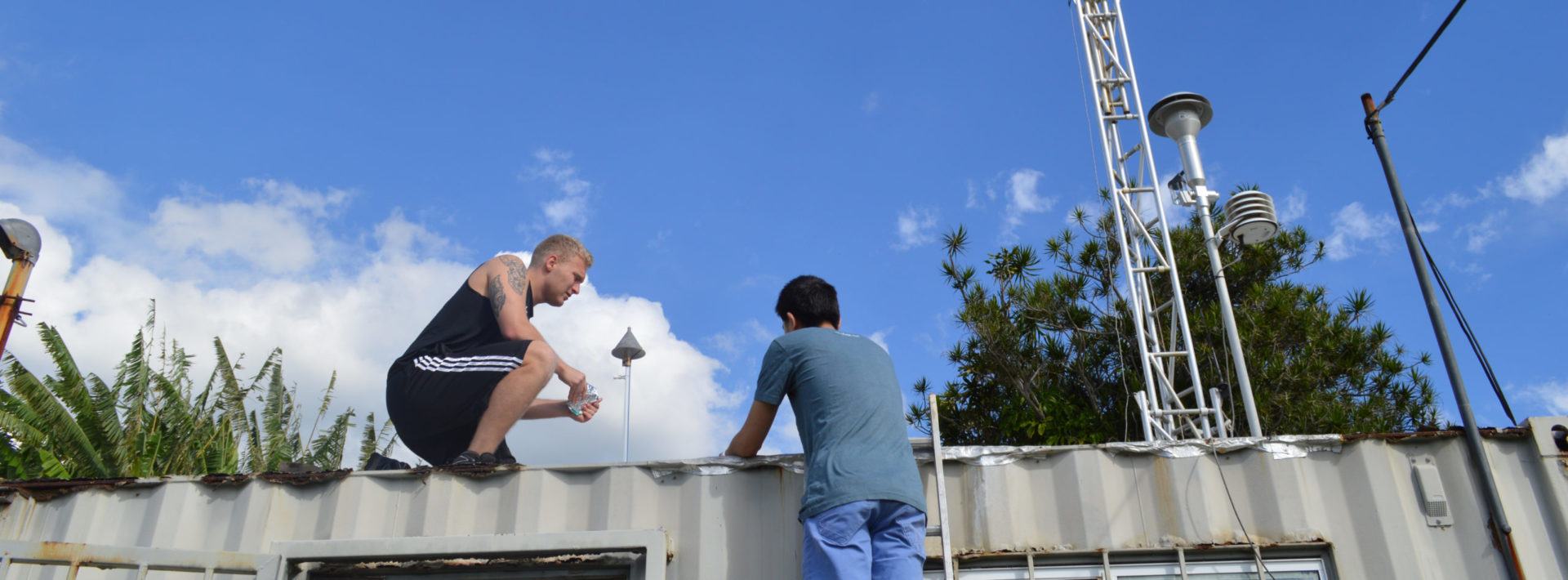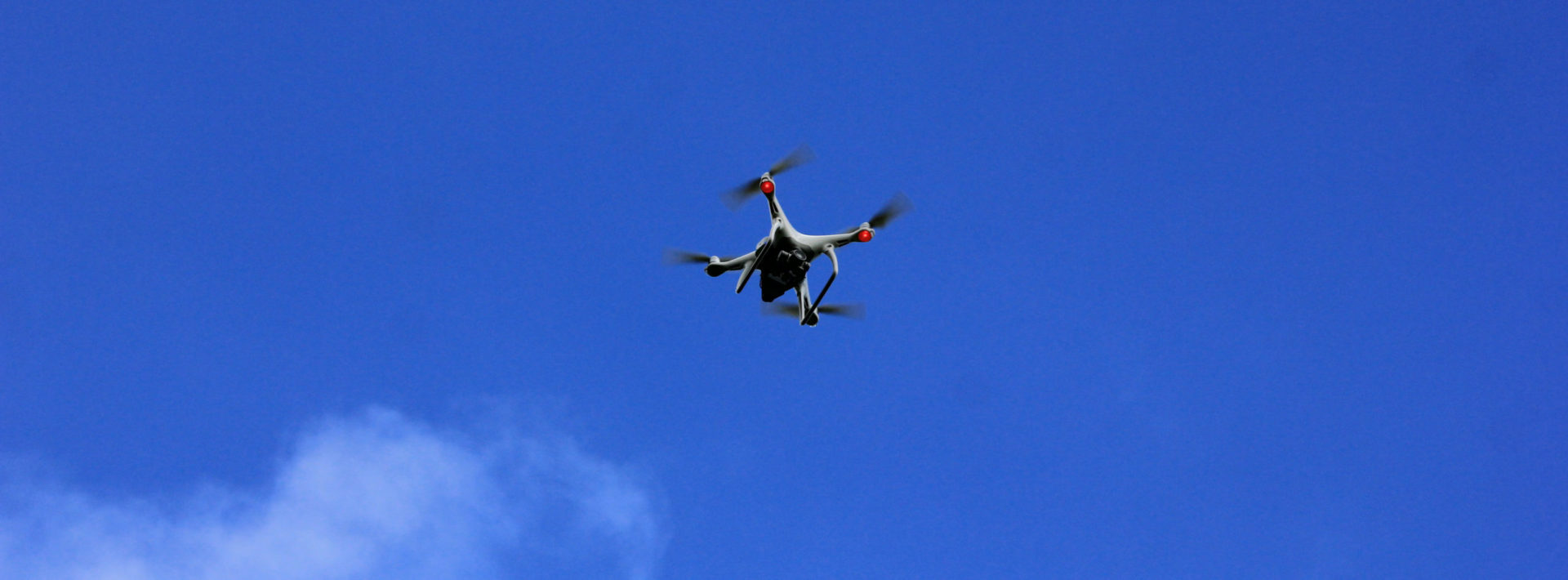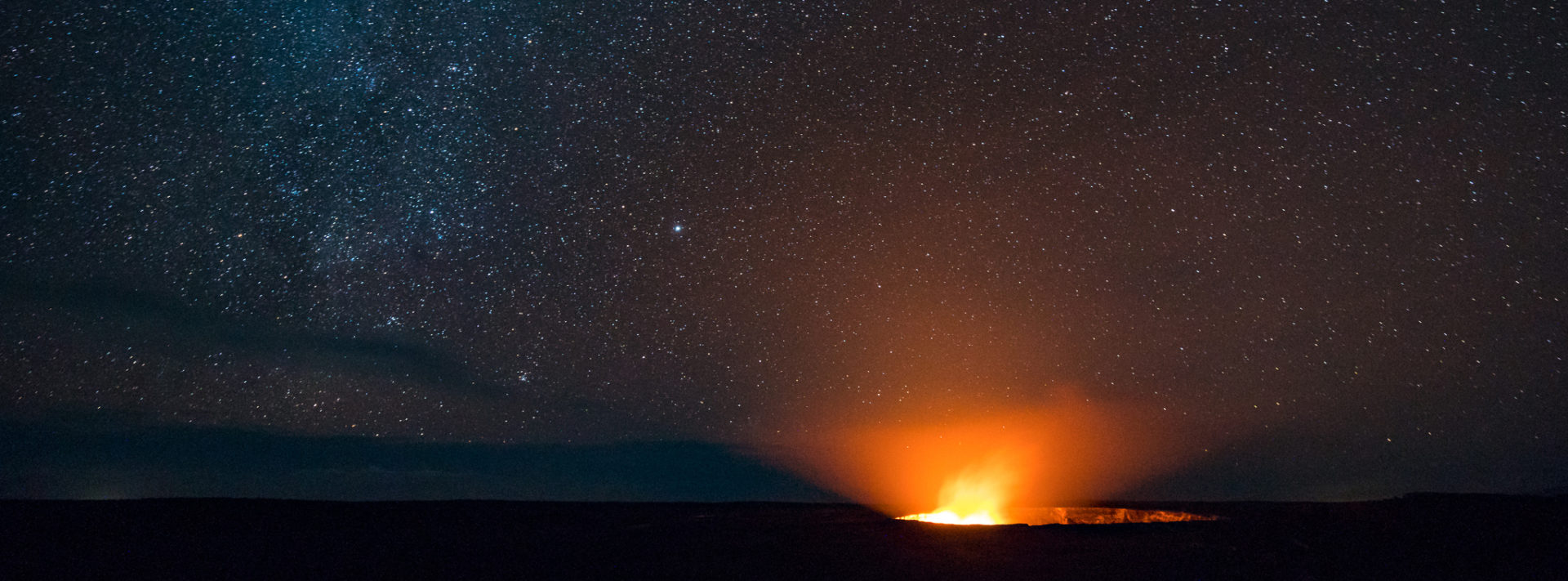TREX 2018 Day 4: Sensor Work and Vog

By Meghan Reisenauer ‘19

Josh and Chang have a blast removing some of the sensors
Today our group of seven TREXers split up for the first time in Hawaii to work on different projects. Josh, Chang, and I headed to Pahala to check on our particle sensors and take half of them back into the ‘shop’ at camp. We also needed to fix the door on the Dept. of Health Clean Air outpost, which had fallen off its rusted hinges. Professor Kroll told us on the car ride over that most metal here, near the vog vents, rusts very quickly from the acidic rain – much like the lava rock in the Kilauea Iki crater we visited yesterday. Even the roof of the outpost is rusting near the edges, making it a bit concerning to have more than two people on it at a time; we made sure to keep two the limit as we worked on the roof.

Considering how to fix the broken door
Fences around cattle ranches rust quickly, too. Our TA Ben told us that before the vent opened, all the fences were made of scrap metal, like most cattle farms you’ll find. Then, after the increased acidity of the rain, those rusted quickly and were replaced with stainless steel. Only a couple years later, however, most ranchers needed to replace the steel fences with fiberglass ones. It seems that trying to make a living as a farmer near the steam vents is a constant struggle: not only do your fences rust away, but the cattle’s teeth are prone to rotting from their increased fluoride intake. Hydrogen fluoride is released from the vents and infiltrates drinking water, or is inhaled by the cattle. Even the plants they graze are affected by the increased fluoride in the water. There used to be many orchid farms in the area, but the flowers were too fragile to adjust to the levels of chemicals released when the crater vent opened some years ago, and all but one of the farms had to close. It’s interesting to hear about how the ecology of the volcanoes has a drastic effect on people’s daily lives here, beyond health concerns about breathing in vog aerosols.

The visible vog plume off Kilauea on the drive to Pahala
We took down the particle sensors that appeared to have battery problems, to take them back to Kilauea Military Camp and make some adjustments. All of the data on the micro SD cards for the sensors were loaded onto our laptops and saved for analysis later; each had about four to five days’ worth of particle data collected. After we pulled the data and fixed the door hinges, we were on our way back to KMC to reconnect with the others, who had remained at camp to set up and check the rest of our equipment.

Pulling data from the sensors
We got some bad news back at KMC – due to the government shutdown, the entire Volcanoes National Park was being closed. Since our house is inside the Park, we were unfortunately told to vacate by 11 am Monday morning. Our professors immediately started looking for lodging for us all before we move into the Hapuna Beach A-frames in a few days. We’re all sad to be leaving KMC earlier than planned; it is a very nice facility and quite conveniently located for our research!
Later, we presented our research so far to MIT alumni visiting the area. There were alums from all different majors, who each asked very in-depth questions about their field of study in relation to our projects with the particle sensors and drone usage. Although we didn’t have all the answers, we did our best explaining our work and fielding questions from the room. They all thanked us for being there and sharing our experience on TREX with them. Our professors and TAs were impressed with how well we handled the questions from the very experienced alumni.
Tomorrow we will visit a local farm and put some of our precision agriculture research to work! Hopefully, we can suggest solutions to the farmer’s issues with crop growth. Be sure to check back for that blog soon!
Every year, a group of MIT students and professors travel to the Big Island of Hawaii to gain fieldwork experience through TREX (Traveling Research Environmental EXperiences). The first TREX trip was held in 2000, and since launching has taken students on research activities in domestic and international settings. For more undergraduate opportunities, click here.



